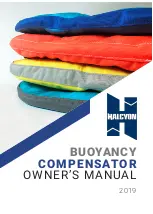
8
3. UV Laser Marking
Direct printing on wires and cables with Ultra-violet (UV) lasers has been extensively
tested and accepted within the aerospace industry both by OEMs and by the end users. It is
covered by a number of documents and standards issued by SAE International
(
AIR5558, AIR5468B, AS5649) and reflected in the production
specification of large and small frame aircrafts for commercial, industrial, and military use. The
OEM list includes Boeing, Airbus, Lockheed Martin, Sikorsky, Gulfstream, Bombardier, Pilatus,
and many others. It is also used by the governmental agencies such as DOD, NASA, FAA, etc.
The end users employ UV laser marking machines during the scheduled maintenance and repair
procedures.
UV laser leaves permanent indelible high resolution marks on the substrate surface
without altering material properties. Some commonly used pigments such as Titanium Dioxide,
change color upon short but intensive UV exposure. The same effect occurs when those additives
are imbedded into the substrate. Ideally, laser radiation does not react with primary material and
freely goes through the substrate surface. However pigment particles distributed in the bulk
strongly absorb the beam. The absorbed energy modifies pigment structure and appearance
including the color. Due to the strong absorption most of the beam energy dissipates within a few
surface layers. Thus, only a small fraction of pigment particles (~ 1%) gets involved into the
transformation. Typical concentration of additives is about 2-3wt%, therefore total amount of
modified material in the substrate is extremely low (~0.03%). The depth of marking is inversely
proportional to the concentration of additives and usually does not exceed 25
µ
m. Very short
laser pulses (~10ns) prevent regular heat exchange between the additives and surrounding
material and limit any structural and/or chemical modifications only to the pigment particles
themselves.
Titanium dioxide (
TiO
2
)
is a white color pigment added to the wire insulation materials
as well as to different formulations of paints, coatings, and plastics primarily for color changing
purposes. For industrial applications it is mostly produced as powder of white color submicron
particles or slurry. UV laser irradiation of substrates containing
TiO
2
causes distinct darkening of
exposed areas when originally white
TiO
2
particles turn blue/black.
The change of color can be explained by the transformation of laser irradiated
TiO
2
particles into the other Oxygen deficient forms of Titanium Oxides that have different colors
varying from nearly transparent off-white to a dark blue/black. This process is practically
irreversible and provides both chemical and mechanical permanency to the mark.
Only the wire insulations doped with
TiO
2
can be reliably marked with UV laser. The
marking contrast depends both on laser intensity and concentration of
TiO
2
in the wire jacket.
The contrast does increase with laser intensity to a certain point when all pigment particles in the
surface layer turn black. On the other hand, low concentration of the
TiO
2
in the formulation
results in the poor marking contrast. In this case the legibility can be improved by making the
marking characters bigger and bolder. M100LFG-TT/150 has a wide range of adjustability and is
capable of producing a legible marking even on the wires with relatively low concentration of
TiO
2
. Detailed description of the font optimization procedures is given in the chapter 10.
Table 1 specifies typical contrast levels achievable by direct UV laser printing on the
wire constructions commonly used in the aerospace industry. Fig.3.1-4 show examples of solid
and dot-matrix marking made by Tri-Star Technologies UV lasers on ETFE and PTFE insulated
wires. The marking stays intact even after extensive accelerated thermal aging. The darkening
Содержание M100LFG-TT/150
Страница 3: ...3 12 Mechanical Diagrams 63 13 Electrical Diagrams 66 14 List of Appendices 73 ...
Страница 63: ...63 12 Mechanical Diagrams ...
Страница 64: ...64 ...
Страница 65: ...65 ...
Страница 66: ...66 13 Electrical Diagrams ...
Страница 67: ...67 ...
Страница 68: ...68 ...
Страница 69: ...69 ...
Страница 70: ...70 ...
Страница 71: ...71 ...
Страница 72: ...72 ...
Страница 73: ...73 14 List of Appendices A Laser Manual B Cooler Manual C Scanner Manual D ScanaloneCard Manual ...









































